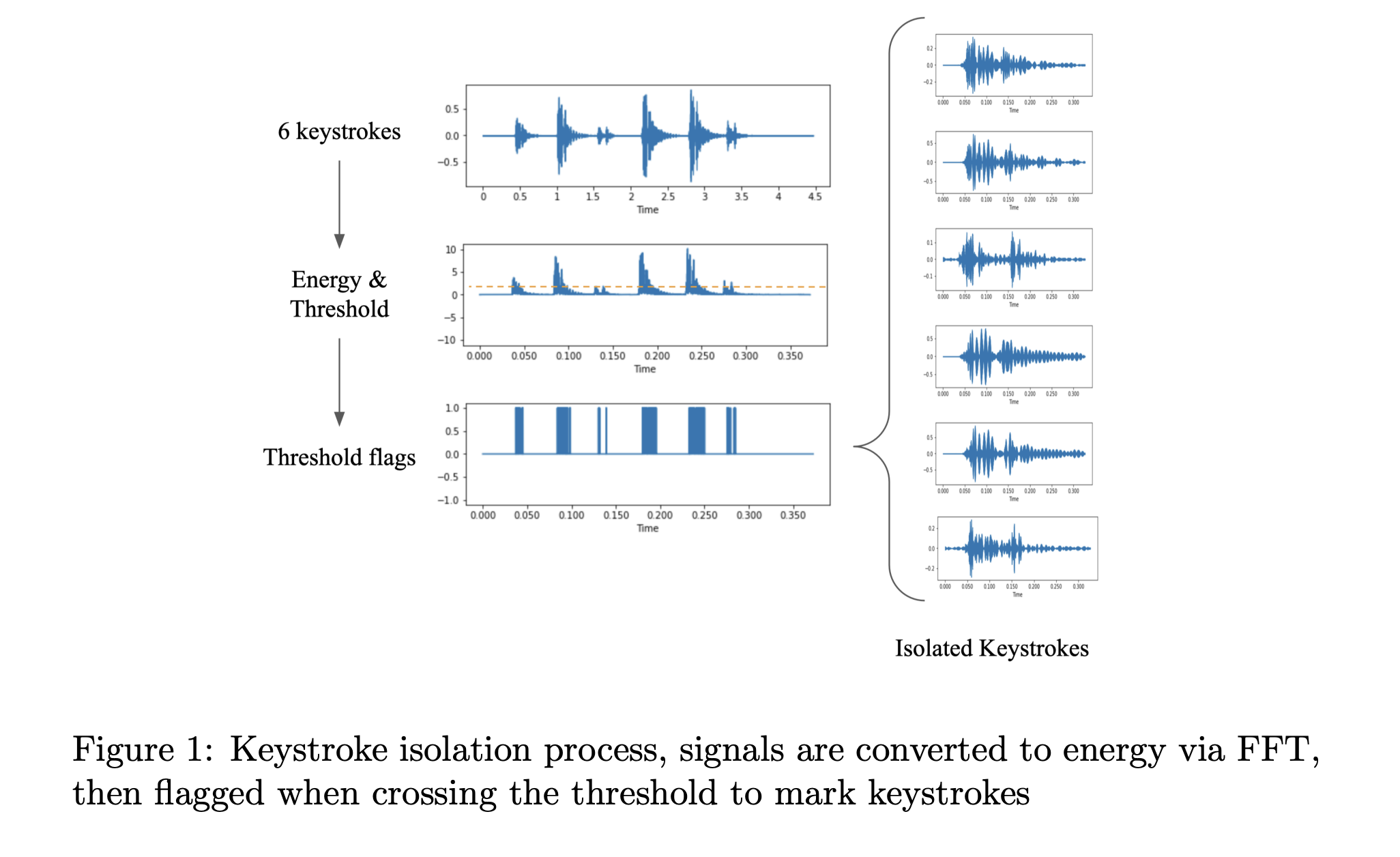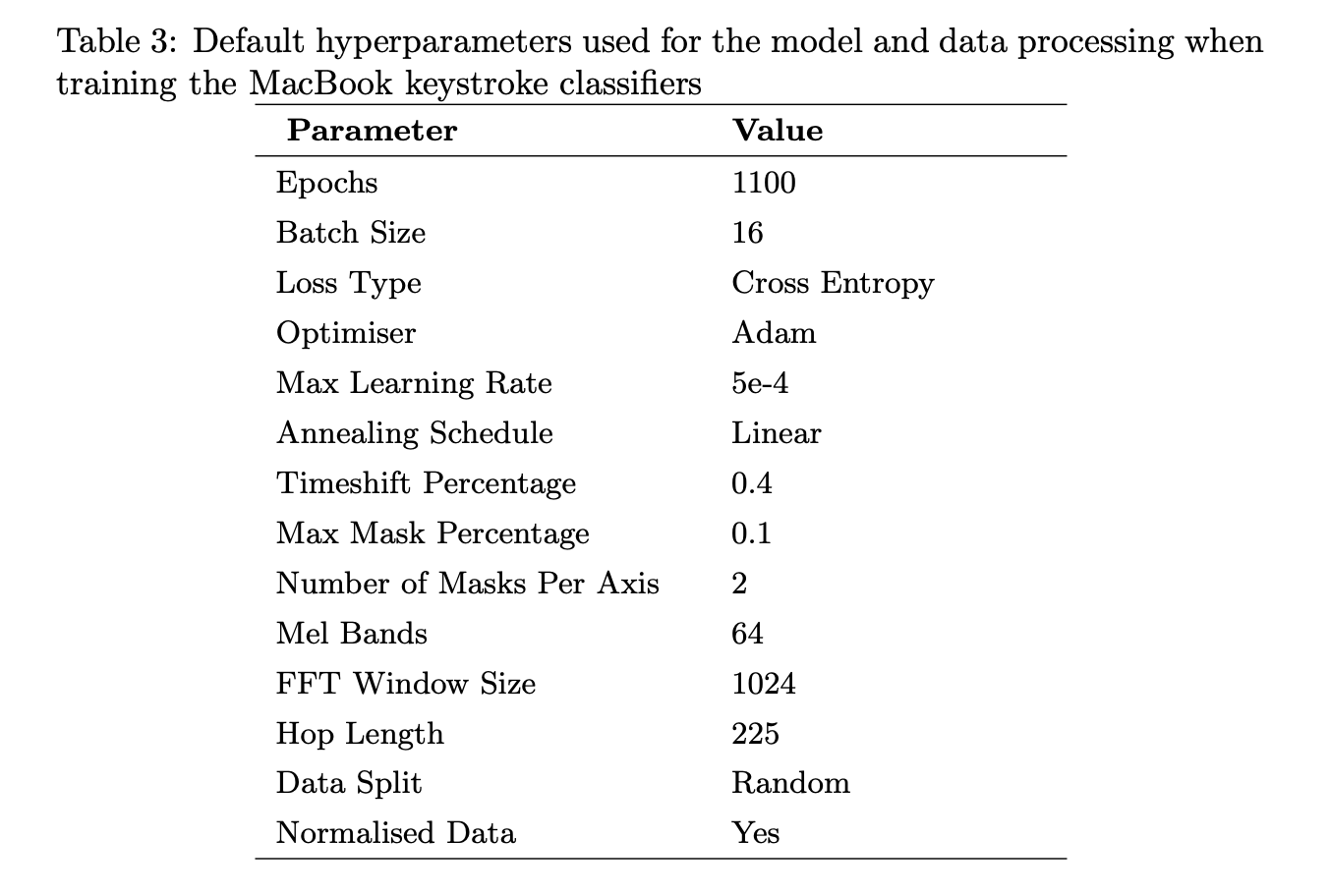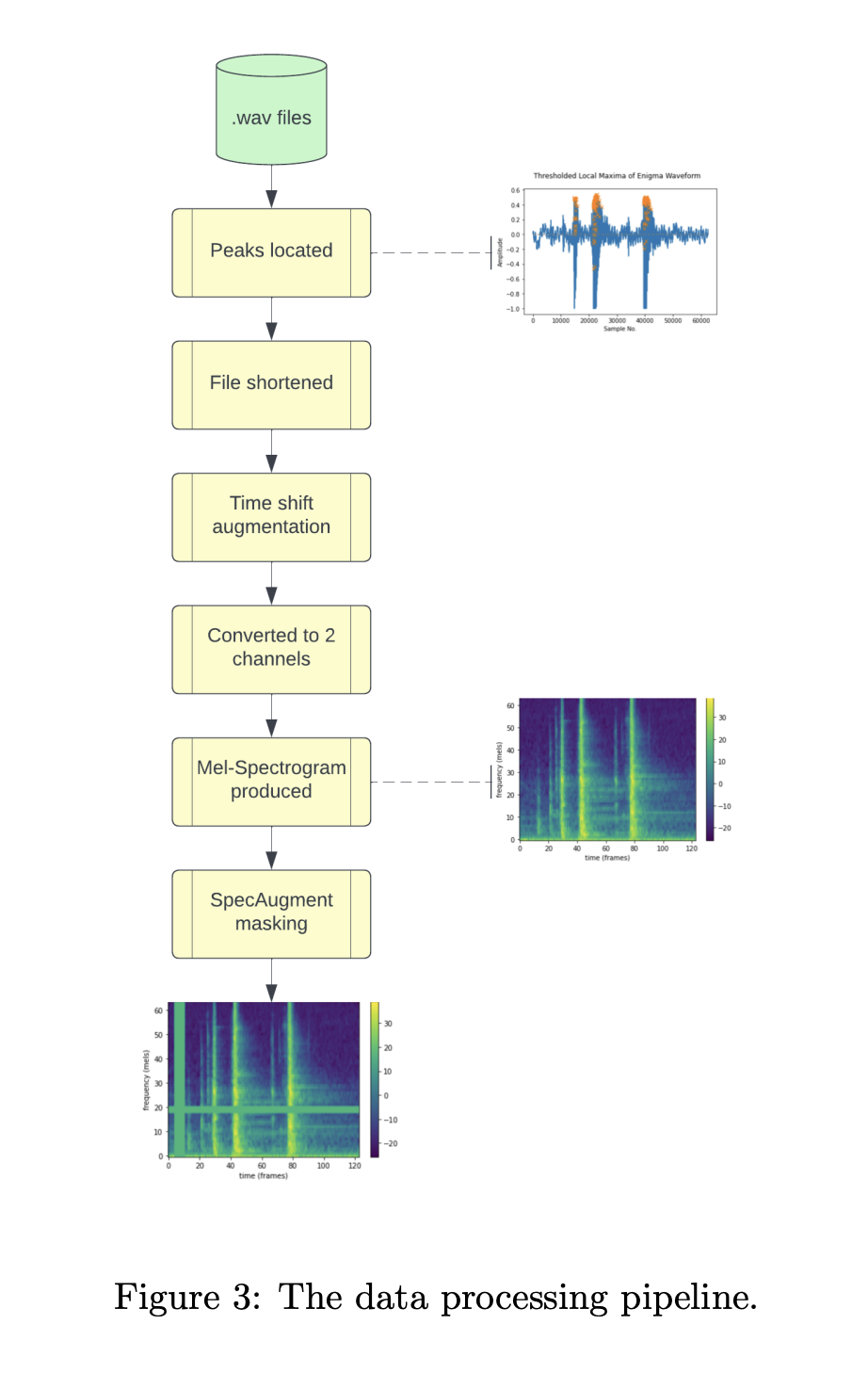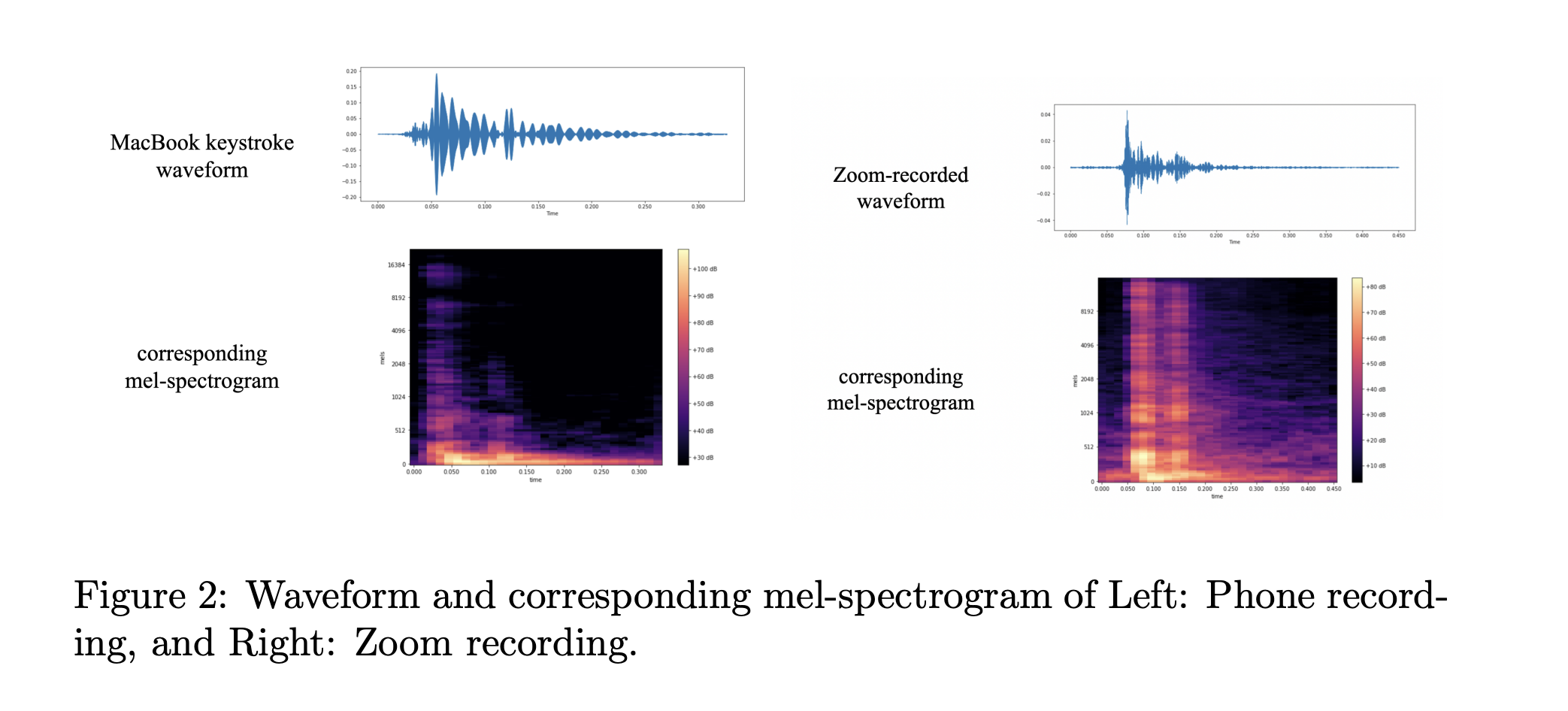This implementation was done as tenure long project under the Brain and Cognitive Science Club, IITK by the following 2nd year UG Secretaries:
Mentors:
Trained Model weights trained on 700 epochs also provided in the repo under the name 700_passphrase.pth
This repository is an implementation of the paper A Practical Deep Learning-Based Acoustic Side Channel Attack on Keyboards
With recent developments in deep learning, the ubiquity of microphones and the rise in online services via personal devices, acoustic side channel attacks(ASCA) present a greater threat to keyboards than ever. This repo presents a practical implementation of a state-of-the-art deep learning model in order to classify laptop keystrokes, using a smartphone integrated microphone.
- KeyStroke Isolation
- Setting Threshold
- Time Shift Augmentation (Augmentation not implemented)
- Generating Mel-Spectrograms
- Masking of the Spectrograms (Augmentation Techinique not used)
- Implementing and Training the Convolution X Attention Model (CoAtNet)
- Result Analysis
Note : The code provided here does not contain the implement data augmenation techniques on the Dataset
36 of the laptop’s keys were used (0-9, a-z) with each being pressed 25 times in a row, varying in pressure and finger, and a single file containing all 25 presses.
The recordings were done thorough 2 sources
- SmartPhone Microphone
- Zoom Meeting
Implement a function to extract individual keystroke

Performing the Fast Fourier transform(FFT) on the recording and summing the coefficients across frequencies to get ‘energy’. An energy threshold is then defined and used to signify the presence of a keystroke.
- methods for FE
$\to$ FFT, MFCC, XC (not used because MFCC - human speech, FFT - linear scale which is bad) - paper used mel-spectrograms
- mel-spectograms
$\to$ method of depicting sound waves and is a modified version of a spectrogram, unit of freq - mel - spectograms
$\to$ represents sound as a map of coloured pixel(brightness - amplitude of frequency), Y - freq, X - time
CoAtNet can be seen to consist of two depth-wise convolutional layers followed by two global relative attention layers. The act of combining convolution and self-attention methods allows for rapid processing of patterns in the data while down-sampling the size (convolution) before determining the relevance of these patterns to one another through the calculation of attention scores (self-attention)
- Prior to feature extraction, signals were time-shifted randomly by up to 40% in either direction
- The mel-spectrograms were then generated using 64 mel bands, a window length of 1024 samples and hop length of 500
- Using the spectrograms, a second method of data augmentation was implemented called masking.
- This method involves taking a random 10% of both the time and frequency axis and setting all values within those ranges to the mean of the spectrogram, essentially ‘blocking out’ a portion of the image.
- Using time warping and spectrogram masking combined is called SpecAugment and was found to encourage the model to generalise and avoid overfitting the training data
We trained the model on the 700 epochs

@inproceedings{Harrison_2023,
title={A Practical Deep Learning-Based Acoustic Side Channel Attack on Keyboards},
url={http://dx.doi.org/10.1109/EuroSPW59978.2023.00034},
DOI={10.1109/eurospw59978.2023.00034},
booktitle={2023 IEEE European Symposium on Security and Privacy Workshops (EuroS&PW)},
publisher={IEEE},
author={Harrison, Joshua and Toreini, Ehsan and Mehrnezhad, Maryam},
year={2023},
month=jul }

